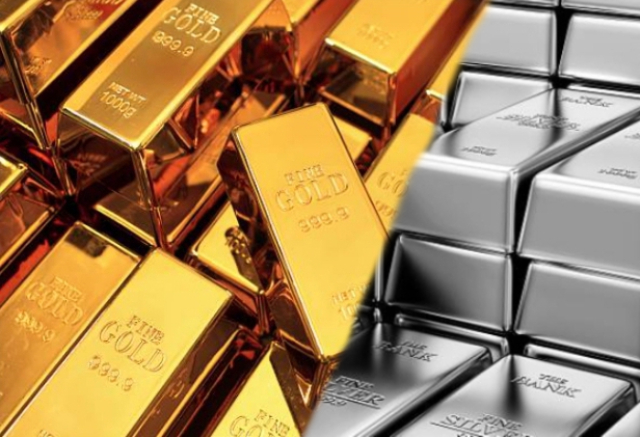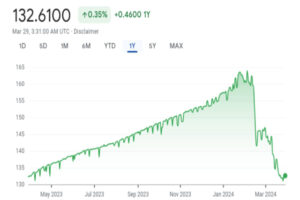Gold and Silver are precious metal commodities. These two precious metals have been used for thousands of years as long-term stores value and also as money. They are relevant investments now, just as they have been for thousands of years.
They are both precious metals, but they have different properties that inform the motive for holding them as investments. Gold is a bright, slightly orange-yellow, soft, malleable, and ductile metal. Silver is a lustrous and soft metal that exhibits the highest electrical and thermal conductivity and reflectivity of any metal.
Because of its properties, gold is used as a long-term store of value, as money in commerce, to make fine jewelry, for décor in the luxury industry, and in electronics to conduct tiny currents of electricity while remaining corrosion free.
Silver has similar applications to gold, but because it has the highest electrical and thermal conductivity and reflectivity of any metal, its industrial applications stand out more than any of its other applications.
The demand for gold is mostly driven by its applications in commerce as a long-term store of value and medium of exchange. To a lesser extent, its demand is driven by its applications in fine jewelry, the luxury industry, and electronics.
The demand for silver is mostly driven by its industrial applications. To a lesser extent, its demand is driven by its applications in fine jewelry, the luxury industry, and commerce.
Both gold and silver are universally accepted by the free market as long-term stores of value and as mediums of exchange in commerce. They are durable, portable, fungible, and relatively scarce. These characteristics epitomize the true definition of money.
Why Invest in Gold and Silver
The global economy swings in cycles. Consequently, some asset classes become suitable for investment, and some become unsuitable for investment.
The world is experiencing rising inflation after more than twenty years of global economic growth. The economic boom that saw almost all asset classes, such as stocks, bonds, commodities, cryptocurrencies, and real estate record historic highs is bursting.
Global economic growth is declining, and investors are increasingly finding themselves cornered. No investment seems resilient enough to withstand the destructive power of inflation.
The value of financial investments and the profits or losses that are realized from those investments are measured in government-issued currencies. Inflation is defined as the general increase in the prices of goods and services. It can also be interpreted to mean the loss of value of government-issued currencies.
Inflation or depreciation of government-issued currencies is the force that is pulling the rug from under investors’ feet. Rising inflation is causing harmless decisions such as saving money under mattresses, in bank accounts, or investing in fixed deposit accounts to end in serious losses.
Investors are facing losses when making more risky decisions, such as buying stocks, bonds, and real estate. Even when stocks gain and dividends are paid, government-issued currencies depreciate, causing investors to lose money. Additionally, currency depreciation reduces the value of capital invested in bonds and the interest earned.
To investors, runaway inflation is a powerful and pervasive wealth destruction force. It does not spare even the innocent bystanders like wage earners whose only business is to toil and provide for their families. They are also being adversely affected by the wage shrinkage power of inflation.
The menacing and ghostly power of inflation can also destroy corporations and entire economies of sovereign countries. The moment inflation causes a corporation to lose control of its costs, it is just a matter of time before the corporation defaults on its obligations to its customers, lenders, employees, shareholders, and the government.
Destruction of a country’s economy happens when the number of corporations being knocked out by inflation reaches a critical mass. At this point, rampant unemployment permeates the working middle class, foreign exchange reserves decline, the country defaults on its sovereign debt, the national currency depreciates rapidly, and then mass protests against economic hardship break out.
The number of countries being knocked out by high inflation is increasing. The economies of Zimbabwe and Venezuela were the first to be knocked out. Sri Lanka was knocked out in 2022. Lately, high inflation has been boiling dangerously in Kenya, Egypt, Lebanon, Argentina, Sudan, Iran, Syria, Turkey, Suriname, and many other countries.
High inflation in Western Europe and most of the world is manifesting mainly through astronomical energy and grocery bills. Extreme inflation is called hyperinflation. Hyperinflation is the phase of inflation that obliterates government-issued currencies. Hyperinflation on a global scale can precipitate a global currency crisis and throw the valuation of financial investments into disarray.
Behind every print of high inflation, there is someone’s personal or family wealth being destroyed. More than ever before, investors are looking for investments that can protect their wealth from the ravages of high inflation.
Gold and silver fit the bill. These two precious metals and especially gold, have protected investors’ wealth for over 4,000 years from just about any adversity. From wars to economic crises, gold and silver have held their ground. They have been used as enduring stores of value, and mediums of exchange, by thousands of generations throughout history.
Anything else that purported to be money in the history of the world other than gold and silver did not withstand the test of time. It was destroyed by one of the many economic crises that happened in the world.
Gold and silver act as a hedge against inflation. As the general cost of goods and services rises, the prices of gold and silver also rise. Smart investors rotate out of inflation-sensitive investments and into gold and silver.
Out of concern for the long-term future of the global economy, the IMF and major central banks in the world like the Federal Reserve bank, the European Central Bank, the Peoples Bank of China, the Bank of Japan, the Bank of England, the Central Bank of the Russian Federation, the Deutsche Bundesbank, and the Bank of Italy among others hold almost one-fifth of the above-ground gold in the world on their balance sheets.
Gold and silver have been good investments for thousands of generations. They are good investments for the IMF and major central banks. They are also good investments for you. It is wise to include gold in your investment portfolio.
There are many different ways in which an investor can gain exposure to gold and silver. Not all of them involve owning the precious metals nor require large amounts of initial capital.
Access to the internet, advancements in commodities trading infrastructure, and enactment of robust financial regulatory frameworks by many countries in the world have made owning gold and silver easy and safe for many citizens of the world.
How to Buy Gold and Silver Through Investment Funds
Many investors find it easy to own gold and silver through investment funds such as mutual funds and ETFs (Exchange Traded Funds). Mutual funds and ETFs are regulated collective investment schemes that pool funds from several investors to invest in a portfolio of financial investments, which are managed by professional fund managers.
Both mutual funds and ETFs issue units to investors who invest in them. These units work like shares of a company except that they don’t carry any voting rights. They only function as the basis for measuring investors’ ownership stake in the investment funds and the distribution of profits or losses to investors.
Mutual funds and ETFs differ in how they issue units and the price discovery method used for the units. For mutual funds, it is the fund manager who is responsible for issuing and pricing the units. The value of a unit is determined by dividing the net asset value of the fund by the total number of units outstanding.
The result is what is called an offer price. The fund manager uses this price to sell units of the fund to new investors. For investors who want to divest from the fund, the fund manager buys back units of the fund from them using the bid price.
Mutual funds that charge an initial investment fee set the bid price of units lower than the offer price by a percent that is equal to the initial fee charged for investments into the fund. The difference between the offer price and the bid price is called a spread.
The offer and the bid price of a unit of a mutual fund that does not charge an initial fee are the same. Mutual funds also charge an annual management fee which is calculated as a small percentage of the value of funds under management.
For ETFs, units of the fund are listed on a stock exchange and investors buy and sell them the same way they do stocks. Price discovery of a unit is done by the stock market. The fund manager is compensated by an annual management fee calculated in the same way as for a mutual fund and it is charged to the fund.
Mutual funds and ETFs can hold any financial investment that the fund manager decides to invest in. The type of investment the fund manager chooses for the fund informs the investment strategy of the fund. This investment strategy is communicated to investors as the objective of the fund in the fund’s prospectus and the fund fact sheet.
Fund managers can choose, stocks, bonds, real estate, commodities, futures, or cash as the underlying investments of their funds. Gold and silver are precious metal commodities. The relevant mutual funds and ETFs for investors who want to invest in gold and silver are those that hold gold or silver as the underlying investment.
Under this arrangement, the fund manager buys gold and silver from commodity exchanges on behalf of investors in the fund and arranges for safe storage in a secure vault. Storage and insurance fees are incurred by investors at the fund level and investors in the fund benefit from economies of scale discounts attendant to the fund.
The fund manager is responsible for all the fund’s marketing, regulatory compliance, accounting, reporting, and overall fund management. All investors have to do to buy or sell gold and silver is to buy or sell units of the fund.
Investors can invest directly into gold or silver mutual funds or ETFs or they can choose to access them through unit-linked regular or lump sum savings and investment plans. Unit-linked regular or lump sum savings and investment plans are insurance and investment policies sold by insurance companies.
Contributions to unit-linked savings and investment plans are called premiums. A small portion of the premium paid into a regular or lump sum unit-linked savings and investment plan is used to buy life insurance and the balance is used to buy units in a mutual fund or ETF. For purely investment unit-linked plans, it is possible to allocate the full premium to investment without having to purchase any life insurance.
Investors using unit-linked investment plans to buy gold or silver only need to ensure that, the mutual fund or ETFs they buy through their unit-linked investment plans have gold or silver as the underlying investment.
There are many good gold and silver ETFs on offshore investment platforms. Your financial adviser can help you find those that are good for direct investment and also those that are good for investment through unit-linked investment plans.
How to Buy Gold and Silver Through ETCs
Exchange-traded commodities ETCs are debt instruments (notes) that are secured by commodities. They allow investors to invest in markets such as agricultural commodities, metals, and oil that are otherwise difficult to access.
An ETC can invest in either one commodity or a basket of commodities and its performance can be based on the spot price of a commodity or tied to the future price of a commodity.
The price of an ETC rises and falls along with the commodities it holds as collateral. ETCs are structured like investment funds and they charge a management fee just like investment funds but they are not investment funds.
ETCs issue units to investors just like mutual funds and ETFs, but they are more similar to ETFs because their units are listed on stock exchanges and are traded just like ETF units and ordinary stock. The relevant ETCs to invest in to gain exposure to gold and silver are those that hold gold or silver as collateral.
You can also access ETCs from offshore investment platforms. Your financial adviser can help you to invest the premiums that you are paying into your unit-linked savings and investment plan in ETCs that hold gold or silver as collateral.
How to Buy Physical Gold and Silver Bullion
Physical gold and silver bullion are officially recognized as being at least 99.5% and 99.9% pure and are bought in the form of bars, ingots or coins. Investors can buy or sell bullion through dealers who are active on one of several global bullion markets.
Investors who prefer the hands-on approach to investing will find buying gold and silver bullion from a dealer appealing but they have to arrange for the secure delivery, storage, and insurance of their precious investment.
A more convenient way to buy physical gold and silver bullion is through an online gold and silver bullion dealer like BullionVault. This is the world’s largest online investment gold and silver service taking care of $3.7 billion for more than 100,000 users.
BullionVault has made it easy to buy and sell small amounts, and you get the benefit of owning physical gold without the hassle of actually finding somewhere to store it.
Bars are stored in professional-market vaults in Zurich, London, Toronto, Singapore, or New York. You choose where. Because of its size, you benefit from the low storage costs BullionVault has negotiated, which always includes insurance.
You can sell at any time, without penalty, and your money will be wired the next business day. You can also withdraw your bars. BullionVault is quick and easy. You could own any quantity of physical gold and silver bullion in about 2 hours.
How to Invest Your Retirement Savings in Gold and Silver
Some countries like the US and the UK have made it easy for retirement savings to be invested in gold and silver. Retirement savings regulations in these countries allow self-directed individual retirement accounts to invest in physical gold and silver.
If you have a US retirement savings account such as the IRAs, 401(k), 457(b), 403(b), or TSP, follow the following steps to invest your retirement savings in gold and silver:
- Open a self-directed Individual Retirement Account (IRA).
- Fund your IRA via transfer, roll over, and/or contributions.
- Buy gold and silver that have been approved for investment in IRAs.
This process also involves finding a gold and silver IRA custodian, locating an approved depository to store your gold and silver, and navigating the IRS tax rules on gold and silver IRA accounts.
Fortunately, there are reputable precious metals IRA companies like Augusta Precious Metals that can help you to seamlessly invest your retirement savings in gold and silver.
Augusta has experts that specialize in precious metals IRAs and can assist you to set up your account, acquire the precious metals, and comply with the tax code.
Augusta Precious Metals is a premier gold IRA company that has received thousands of five-star rankings since 2012 and has also won many awards for its outstanding IRA services. It offers precious metals IRAs, sells a range of gold and silver bullion and coins that are approved for IRA investment, and works with trustworthy custodians who administer IRAs.
If you have a U.K. retirement savings account, follow the following steps to invest your retirement savings in gold and silver:
- According to your circumstance, open a Self-Invested Personal Pension (SIPP) or a Small Self-Administered Scheme (SSAS) account.
- Fund your SIPP or SSAS account by transfer of funds from your pension scheme and/or contributions.
- Buy gold that has been approved for investment in SIPPs and SSASs. Silver bullion
This process also involves finding an administrator for your SIPP. If you are a UK citizen and you buy gold bullion in a SIPP or SSAS, depending on your circumstances, you may benefit from a 45% tax relief on your purchase of gold through your pension scheme. Plus, any gains will be free of Capital Gains Tax (CGT).
BullionVault is the go-to company to buy gold for your SIPP or SSAS. Its gold meets the criteria acceptable for SIPPs and SSASs. It supplies more gold both directly to retail investors and their SIPPs and SSASs than anyone else. It is widely recognized as the safe and low-cost way to buy your gold, for whatever purpose. Silver bullion is not approved for investment in SIPPs and SSASs.
How to Invest in Gold and Silver Through Mining Stocks
Another way to invest in gold and silver is to buy stocks of companies involved in the mining of gold and silver. Investors can profit in two ways with this approach. First, if the prices of gold and silver rise, the miner’s profits will also rise and so will the miner’s stock prices.
Second, the miners can increase production over time to make the most out of rising gold and silver prices. This will also lead to higher stock prices for the miners. Gold and silver mining stocks can be purchased directly from stock exchanges or through mutual funds and ETFs that have gold and silver mining stocks as their underlying investment.
Offshore investment platforms can again come in handy here. Investors can purchase gold and silver mining stocks through mutual funds and ETFs that are available on unit-linked investment platforms.
Your financial adviser can help you to allocate the premiums that you are paying into your unit-linked investment plan to mutual funds and ETFs that have gold or silver mining stocks as the underlying investment.






